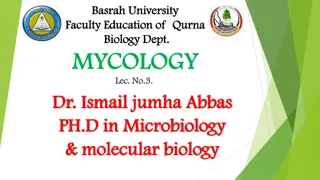Impact of Resistance on Parasite Fitness in Quinoline-based Antimalarial Drugs
Resistance cost of fitness studies the impact of drug resistance on pathogens like Plasmodium berghei. Lumefantrine and Piperaquine, used in ACT against malaria, are investigated to understand how resistance affects parasite fitness. The research aims to provide insights into combating drug resistance in malaria control strategies through experimental methods in a mouse model.
Download Presentation

Please find below an Image/Link to download the presentation.
The content on the website is provided AS IS for your information and personal use only. It may not be sold, licensed, or shared on other websites without obtaining consent from the author.If you encounter any issues during the download, it is possible that the publisher has removed the file from their server.
You are allowed to download the files provided on this website for personal or commercial use, subject to the condition that they are used lawfully. All files are the property of their respective owners.
The content on the website is provided AS IS for your information and personal use only. It may not be sold, licensed, or shared on other websites without obtaining consent from the author.
E N D
Presentation Transcript
The 6th East African Health and Scientific Conference and International Health Exhibition and Trade Fair Fitness cost of resistance for lumefantrine and piperaquine- resistant Plasmodium berghei in a mouse model Francis W. Muregi1and Winnie R. Gimode2 1Mount Kenya University, P.O. Box 342-01000, Thika, Kenya 2Kenyatta University, P.O. Box 43844 Nairobi, Kenya 1
Background Definition and key facts Resistance cost of fitness refer to loss of fitness imposed on the pathogen by resistance Chemotherapy is the mainstay of malaria control strategy Global malaria situation exacerbated by emergence of drug resistance Recent reports of resistance to artemisinin combination therapy (ACT) from SE Asia and our region increasing 2
Rationale LM and PQ are both long-acting drugs, with mismatched pharmaco- kinetics with artemisinins, which may promote development of resistance The greatest impediment to effective malaria control is drug resistance in Plasmodium falciparum, and thus understanding how resistance-conferred traits may influence parasite fitness and pathogenicity/virulence may aid in malaria control strategy 3
Objective To find out how resistance against two quinoline-based antimalarial drugs, Lumefantrine (LM) and Piperaquine (PQ), two partner drugs in ACT impacts on parasite fitness 4
Clinical significance Behaviour of drug-resistant mutants in the absence of drug is of clinical relevance since the drug that induced resistance can be reintroduced That is the rationale behind WHO recommendation that at 10% level of resistance, withdraw the drug: Reports on CQ-resistance phenotypes shrinking in Malawi where withdrawal was done in1993 5
Experimental design and methods Generation of resistance: P. berghei ANKA subjected to LM and PQ pressure using 2% relapses technique (Peters & Robinson, 1999) in mice over several generations; kindly donated by Dr Daniel Kiboi of KEMRI Resistance cost of fitness; Considering the isogenicity of the parasites, their growth rate (serial passaging in Swiss albino mice) was used as a measure of fitness Percentage % Loss of fitness = 100 {(mean parasitaemia mutant/mean parasitaemia wildtype) 100} ; (Muregi et al. 2011) 6
Results and Discussion:1 ED50 and corresponding I50 values of respective parasite lines were obtained to determine the level of resistance 7
Results and Discussion:2 LM- resistance is unstable LM-exposed parasites persisted only up to the 16th passage, after which no parasites could be microscopically observed after treatment with 30mg/kg cumulative dose of LM 8
Results and Discussion:3 There was no significant difference in %P for the respective parasite lines at D7pi: No fitness cost on the LM-exposed line Transience: Is it epigenetic modification? Is it compensatory mutations? What is clinical significance? 9
Results and Discussion:4 PQ-resistance is stable and imposes a fitness cost on the resistant line 10
Results and Discussion:5 PQR showed significantly low (P<0.05) growth rates (mean parasitemia=5.6) relative to the wild-type parasite (28.4) at D7 pi This translates into a five-fold faster growth rate for the wild-type parasite by D7 pi An overall resistance cost of fitness of 80.3% for the PQ-resistant line was realized. 11
Results and Discussion:6 Previously, we had shown that parasite resistance to 5- fluoroorate (TS inhibitor) imposes a fitness cost of resistance of 66.0%, relative to the wild-type (Muregi et al., 2011) There are similar reports from studies of other pathogens including different species of bacteria, Toxoplasma gondii, and viruses, indicating concomitant fitness cost in the absence of selection (Schrag & Perrot, 1996; Levin et al., 2000; Bjorkman et al., 1998; Bjorkman & Andersson, 2000; Mariam et al., 2004; Borman et al., 1996; Leigh et al., 2003; Lu et al., 2004; Fohl & Roos, 2003; Nagaev et al., 2001) 12
Conclusion and recommendation In malaria-endemic countries, even partial resumption of drug sensitivity may positively impact public health Monitoring development of resistance and prompt withdrawal of drugs from clinical use is necessary to allow for possible re- introduction of these drugs _________________________________________ 1.Gimode et al. (2015). Malaria Journal14:38 2. Muregi et al. (2011). Plos 6(6):e21251 13
ACKNOWLEDGEMENTS TTWA
Thank you 15























